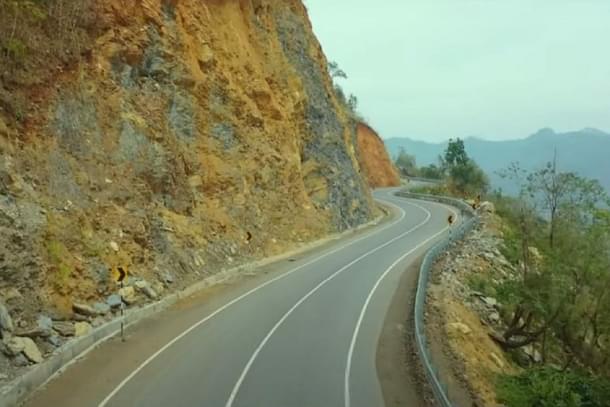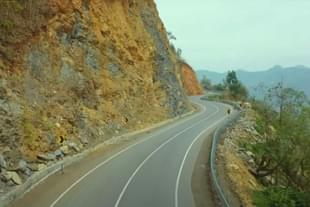Commentary
Thanks To Modi Government, A Smooth Drive From Kolkata To Bangkok Will Become A Reality By 2027
Jaideep Mazumdar
Jun 14, 2023, 02:41 PM | Updated 03:06 PM IST
Save & read from anywhere!
Bookmark stories for easy access on any device or the Swarajya app.


The much-awaited India-Myanmar-Thailand trilateral highway that will connect Kolkata to Bangkok through Myanmar, is expected to be ready in four years’ time.
The 2,800-kilometre-long highway is a Bay of Bengal Initiative For Multi-Sectoral Technical & Economic Cooperation (BIMSTEC) project aimed at boosting multilateral trade.
Ministers and senior officials Myanmar and Thailand who attended a two day conclave of BIMSTEC countries (Bangladesh, Bhutan, India, Myanmar, Nepal, Sri Lanka and Thailand) in Kolkata that ended Tuesday (13 June) said that work on this road project will be completed within the next three to four years.
While most of the work on the Indian and Thailand parts of the highway are complete, problems in Myanmar have held up construction in that country.
Myanmar Commerce Minister Aung Naing Oo told Swarajya that most of the 1,512-kilometre stretch of the highway inside Myanmar is complete. “We are sure of completing the unfinished portions, as well as the portions that are undergoing upgradation, by the end of 2026,” the Minister said.
“A 121.8-kilometre stretch of the highway between Kalewa and Yar Gyi is being upgraded to a four-lane highway and that is taking time,” Oo told Swarajya.
The Thailand portion of the highway from Bangkok to Mae Sot that lies on the Thailand-Myanmar border is almost complete. “This 501 kilometre stretch is almost ready. It is also part of Asian Highway-1,” Thailand’s Vice Minister for Foreign Affairs, Vijavat Isarabhakdi told Swarajya.
The Thai Minister said that only minor works like paving the shoulders of the highway in some portions and planting trees and flowering bushes on the verges and dividers are going on now. “All that will be over very soon,” he added.
The trilateral highway starts in Kolkata and travels north to Siliguri from where it veers towards the east, traverses the length of Dooars area of North Bengal to exit Bengal through Cooch Behar and enter Assam through the Srirampur border.
It continues in an easterly direction across the length of Assam to enter Nagaland from Dimapur.
The highway then turns south to traverse through Nagaland and Manipur, passing through Imphal to enter Myanmar through Moreh. From Moreh, it travels in a southwesterly direction to cross Mandalay, Naypyidaw (the country’s new capital), Bago and Myawaddy to enter Thailand through Mae Sot.
The trilateral highway project was first proposed and approved at a ministerial meeting of India, Myanmar and Thailand in Yangon (Myanmar) in April 2002. The proposal was tabled by the Atal Behari Vajpayee government at that time.
Prime Minister Vajpayee proposed the project to boost trade between India and the Association of Southeast Asian Nations (ASEAN).
A visionary, Vajpayee had proposed that the highway could eventually be extended through Cambodia to Vietnam and then Laos.
Work on the ambitious highway project started almost immediately. It was decided to integrate the 160-kilometre long Indo-Myanmar Friendship Road (Moreh-Tamu-Kalewa-Kalemyo) built by India’s Border Roads Organisation (BRO) into the Trilateral Highway.
The Indo-Myanmar Friendship Road, mooted and approved by the Vajpayee government in 1999, was constructed by the Border Roads Organisation (BRO) in record time and inaugurated in February 2001.
As per the bilateral agreement between India and Myanmar, the BRO maintained this road till 2009. After that, Myanmar was to have upgraded the road, including all the bridges along the road.
But Myanmar expressed its inability to do so due to severe financial constraints. Subsequently, in May 2012, the Manmohan Singh government announced that India would invest US$ 100 million to repave the existing highway and make it into a four-lane expressway, and also reconstruct the 71 bridges in the stretch.
But that commitment remained only on paper and it was not until Prime Minister Narendra Modi came to power that work on this started.
Myanmar, in 2015, also withdrew from its promise to upgrade a 77.5 kilometre stretch of the then existing two-lane road between Yar Gyi and Monywa that would become part of the Trilateral Highway.
The Modi government promptly committed itself to undertaking this upgradation at its own cost. And by 2019, the road between Yar Gyi and Monywa was upgraded to a four-lane expressway.
An MoU between India and Myanmar was signed during the visit of Myanmar’s then president, Htin Kyaw, to New Delhi in August 2016. As per the MoU, India agreed to fund the construction of 69 bridges, including the approach roads to these bridges, in the 146.28 kilometre stretch of the Tamu to Kalewa road that will be part of the Trilateral Highway.
The PMO under Narendra Modi started closely monitoring the project and by November 2017 (in a little over one year), the BRO had achieved the feat of upgrading the 160-kilometre stretch of the Tamu to Kalewa section of the proposed Trilateral Highway at a cost of US$ 27.28 million.
In August 2017, India allocated US$ 256 million to complete all pending works on the Myanmar section of the Trilateral Highway.
The very next month (September 2017), the Narendra Modi government awarded a US$ 150 million contract for upgradation and maintenance of the Kalewa to Yar Gyi section (121.8 kilometres) of the Trilateral Highway.
“We are very thankful to the Narendra Modi government for helping us out with a massive infusion of funds and technical expertise in building this highway that will benefit India and ASEAN. A lot of the work has been expedited at the personal intervention of Prime Minister Modi,” Myanmar commerce minister Aung Naing Oo told Swarajya.
India had also prevailed upon Thailand to finance a 68 kilometre stretch of the Trilateral Highway between Thaton (Mon state) and Ein Du (Kayin state) in Myanmar. Ein Du is 111 kilometres from the Myanmar-Thai border.
Myanmar, due to its precarious financial condition, was finding it difficult to upgrade the Thaton-Ein Du stretch. The Myanmar government conveyed its difficulties to New Delhi.
It is learnt that Prime Minister Modi got in touch with his Thai counterpart and requested the latter to help out Myanmar. In February 2017, an MoU was signed between Thailand and Myanmar to upgrade this section at a cost of US$ 51 million.
Thailand bore the entire cost of this upgrade and work has already been completed.
Once the ongoing work on the 121.8-kilometre Kalewa to Yar Gyi stretch is completed by the end of 2026, the Trilateral Highway will become operational by early 2027.
The Myanmar Commerce Minister also told Swarajya that his government is expediting work on signing the India-Myanmar-Thailand Motor Vehicles Agreement to facilitate seamless movement of passenger and cargo vehicles between the three countries.
The Kalewa to Yar Gyi stretch lies in the restive Sagaing region that has been witnessing fierce fighting between the Myanmarese junta soldiers and rebels, mostly belonging to the Arakan Army.
The insurgency had held up work on this stretch of the Trilateral Highway. Under the Modi Government, New Delhi has reached out to the Arakan Army and extracted a commitment that it (the rebel outfit) will not disturb work on the stretch of the Trilateral Highway that passes through Sagaing province.
A senior fellow at the ASEAN-India Centre (AIC) in the Research and Information System For Developing Countries in New Delhi’s India Habitat Centre, told Swarajya that the Trilateral Highway project really took off once Narendra Modi became the Prime Minister.
“The Vajpayee government mooted the project and started the works. But the Manmohan Singh government (2004 to 2014) did little to clear the many roadblocks that came up. It (the two UPA regimes) committed funds, but that was all. The Modi government has been very proactive in pushing the project,” said the AIC senior fellow who did not want to be named.
This view was endorsed by the Myanmar Minister also.





